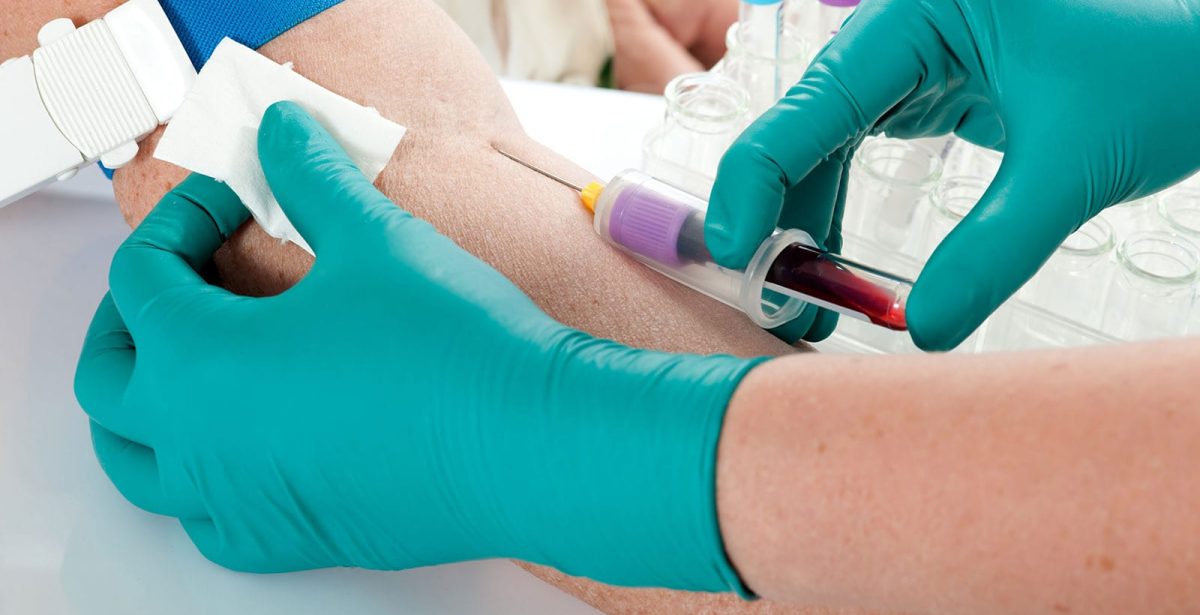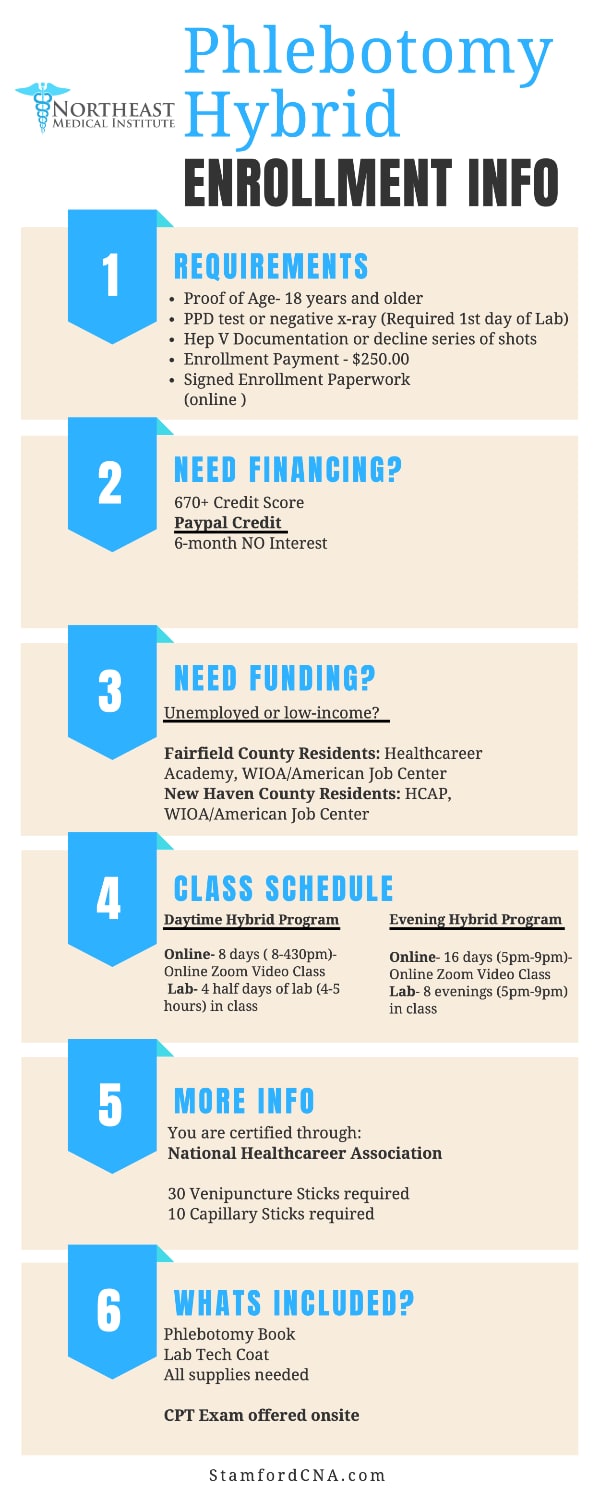Unknown Facts About Northeast Medical Institute - New Haven Campus Phlebotomy Course & Cna Class
Unknown Facts About Northeast Medical Institute - New Haven Campus Phlebotomy Course & Cna Class
Blog Article
What Does Northeast Medical Institute - New Haven Campus Phlebotomy Course & Cna Class Mean?
Table of ContentsAn Unbiased View of Northeast Medical Institute - New Haven Campus Phlebotomy Course & Cna ClassNortheast Medical Institute - New Haven Campus Phlebotomy Course & Cna Class for BeginnersFascination About Northeast Medical Institute - New Haven Campus Phlebotomy Course & Cna Class8 Easy Facts About Northeast Medical Institute - New Haven Campus Phlebotomy Course & Cna Class ShownThe Definitive Guide to Northeast Medical Institute - New Haven Campus Phlebotomy Course & Cna ClassWhat Does Northeast Medical Institute - New Haven Campus Phlebotomy Course & Cna Class Do?
The use of such devices ought to be come with by various other infection prevention and control techniques, and training in their usage. Not all safety devices are relevant to phlebotomy. Before selecting a safety-engineered device, users need to completely check out available gadgets to determine their proper usage, compatibility with existing phlebotomy methods, and efficacy in shielding staff and people (12, 33).For settings with reduced resources, expense is a motoring element in purchase of safety-engineered tools - PCT Courses. Where safety-engineered devices are not offered, experienced use of a needle and syringe serves. Accidental direct exposure and certain info concerning an incident should be videotaped in a register. Assistance solutions should be promoted for those that undertake unintentional direct exposure.
One of the essential markers of high quality of care in phlebotomy is the involvement and cooperation of the client; this is mutually useful to both the health and wellness worker and the person. Clear information either created or spoken ought to be offered to every person who goes through phlebotomy. Annex F supplies example message for explaining the blood-sampling procedure to a person. labelling); transportation conditions; interpretation of outcomes for scientific monitoring. In an outpatient division or center, offer a devoted phlebotomy workstation containing: a clean surface with two chairs (one for the phlebotomist and the various other for the patient); a hand wash container with soap, running water and paper towels; alcohol hand rub. In the blood-sampling area for an outpatient department or center, supply a comfy reclining sofa with an arm rest.
The Of Northeast Medical Institute - New Haven Campus Phlebotomy Course & Cna Class
Make certain that the indicators for blood tasting are plainly specified, either in a composed protocol or in recorded guidelines (e.g. in a research laboratory kind). Whatsoever times, follow the techniques for infection prevention and control listed in Table 2.2. Infection avoidance and control practices. Collect all the tools required for the procedure and place it within safe and simple reach on a tray or cart, making certain that all the things are clearly noticeable.
Present on your own to the patient, and ask the patient to specify their full name. Examine that the research laboratory type matches the person's identification (i.e. match the person's information with the research laboratory type, to make sure exact identification).
Make the person comfy in a supine placement (preferably). Location a clean paper or towel under the individual's arm. Go over the examination to be performed (see Annex F) and acquire verbal consent. The patient has a right to reject a test any time prior to the blood sampling, so it is necessary to make certain that the individual has actually recognized the procedure.
Northeast Medical Institute - New Haven Campus Phlebotomy Course & Cna Class Things To Know Before You Get This
Prolong the patient's arm and evaluate the antecubital fossa or lower arm. Situate a blood vessel of an excellent dimension that is noticeable, straight and clear. The diagram in Area 2.3, shows usual placements of the vessels, yet many variations are feasible. The typical cubital blood vessel exists in between muscles and is usually the most simple to pierce.
DO NOT place the needle where blood vessels are diverting, due to the fact that this raises the possibility of a haematoma. Locating the capillary will help in identifying the appropriate dimension of needle.
Haemolysis, contamination and visibility of intravenous fluid and medicine can all alter the outcomes (39. Nursing team and medical professionals might access main venous lines for specimens adhering to protocols. Specimens from central lines bring a risk of contamination or incorrect research laboratory test results. It is acceptable, yet not perfect, to injure specimens when very first presenting an in-dwelling venous tool, before attaching the cannula to the intravenous liquids.
Not known Incorrect Statements About Northeast Medical Institute - New Haven Campus Phlebotomy Course & Cna Class
Allow the location to dry. Failing to enable adequate call time boosts the danger of contamination. DO NOT touch the cleansed website; particularly, DO NOT position a finger over the capillary to assist the shaft of the revealed needle. It the site is touched, repeat the disinfection. Execute venepuncture as complies with.
Ask the client to develop a clenched fist so the blood vessels are more prominent. Get in the vein swiftly at a 30 degree angle or much less, and remain to introduce the needle along the vein at the simplest angle of entrance - CNA Courses. When enough blood has been gathered, release the tourniquet prior to taking out the needle
Northeast Medical Institute - New Haven Campus Phlebotomy Course & Cna Class Fundamentals Explained
Withdraw the needle carefully and use mild stress to the website with a tidy gauze or dry cotton-wool ball. Ask the client to hold the gauze or cotton wool in location, with the arm prolonged and raised. Ask the person NOT to flex the arm, due to the fact that doing so triggers a haematoma.

The Facts About Northeast Medical Institute - New Haven Campus Phlebotomy Course & Cna Class Uncovered
Do not press the syringe plunger due to the fact that extra stress increases the risk of haemolysis. Where feasible, keep televisions in a shelf and move the rack in the direction of you. Infuse downwards into the proper coloured stopper. DO NOT eliminate the stopper because it will release the vacuum cleaner. If the sample tube does not have a rubber stopper, inject incredibly slowly right into television as reducing the stress and speed used to move the specimen minimizes the danger of haemolysis.

Report this page